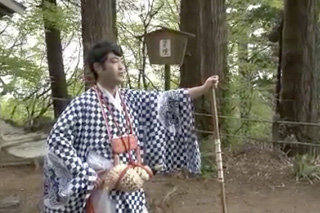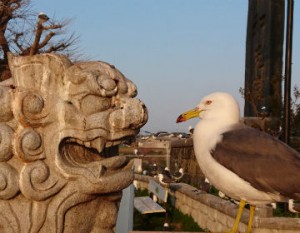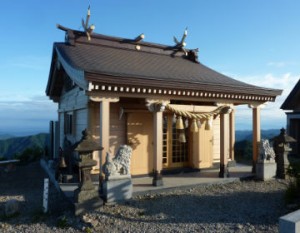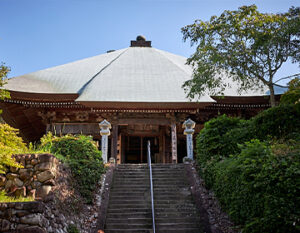Beautiful mountains and the history of faith
Yamagata Prefecture, with impressive, nature-filled mountains has a tradition of faith where the mountains and the people are deeply associated. Mount Gassan (alt. 1984m), Mount Haguro (alt. 414m) and Mount Yudono (alt. 1504m) were the objects of faith as domains of the gods, and called the “Dewa Sanzan” or the three mountains of Dewa. They all have shrines atop each mountain which are collectively referred to as the “Dewa Sanzan Jinja”. According to its official history, the prince of Emperor Sushu sailed over the Sea of Japan and arrived at Yaotomeura beach (present Yurahama in Tsuruoka, Yamagata). Then, led by a three-legged sacred bird, he visited Mt. Haguro and after going through severe mortification, the god “Hagurosan Daigongen” appeared in response. He then went on to open the shrines on Mt. Gassan and Mt. Yudono. The mountains went through changes during the long history, and many Buddhist temples were built under the influence of the “Shinbutsu Shugo” or the syncretistic fusion of Buddhism and Shintoism prevalent in the Heian era, when it became famous as a big spiritual center. Then when Shinto and Buddhism again became separate in the Meiji era, they were redefined as Shinto shrines, and the faith continues to date.
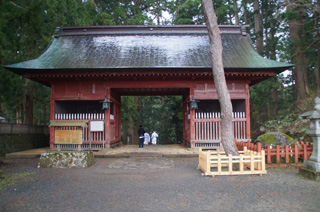
Walk the approach
Nakata visited Hagurosan Shrine and Dewa Shrine with the senior priest Yuichiro Nakano.
“There are shrines on each of these mountains, but Mt. Gassan and Mt. Yudono become inaccessible in the winter due to heavy snowfall. That’s why we have the collective shrine on the top of Mt. Haguro so people can pay visit to the Three Mountains of Dewa year-round” explained Nakano.
Wearing the white costume for the mountain ascetics, we headed for the collective shrine which was 2446 steps up on the staircase. Going through the Zuijinmon gate, we were now in the domain of the god of Mt. Haguro.
There were many cultural assets and structures in this center of faith of the Tohoku region. Proceeding through the approach road to the shrine lined with countless big cedar trees, we saw a pagoda. The wooden structure is considered to be the oldest pagoda in the Tohoku region. To Nakata’s further surprise when he reached the collective shrine, the roof of the shrine was a thatched roof. The building was a Buddhist temple but it was reformed into a Shinto shrine. The shrine had a bell tower and a bell, testifying the history of the Buddhism /Shintoism syncretistic fusion and “shugendo”.
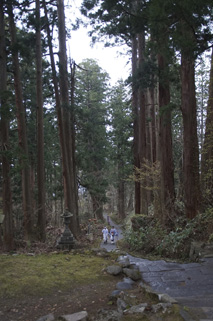
The “shugendo” tradition continues
The major characteristics of the “shugendo” in Mt. Haguro is the idea of experiencing “sankansando“ and “gishisaisei”, both concepts of regeneration through asceticism.
Mt. Haguro symbolizes the present, Mt. Gassan the past and Mt. Yudono the future. Through the pilgrimage of the three mountains, man is supposed to experience virtual death and rebirth.
Every August , a rigorous ascetic exercise called “aki no mine” is carried out. The “shugensha”, those participating in the ritual, stay together in the mountain for 7 days, and stand under a waterfall. This practice has not been changed as its history goes. The “aki no mine” ritual is limited to males, but women can also experience it during events at the “shugendo” schools.
Dewa Sanzan Jinja is a place where you can get to know the beautiful mountains of Yamagata and its charms, as well as the strong living tradition of the faith.
